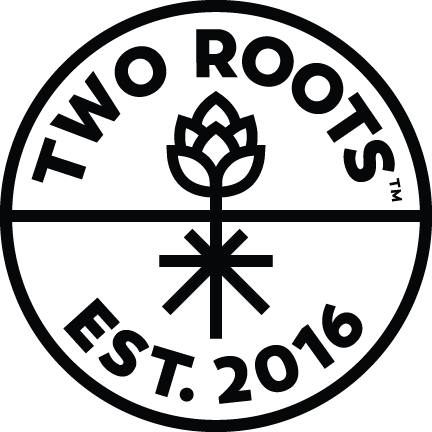Summary – 1 Minute Read.
Durban Poison is a pure sativa strain from South Africa known for its uplifting effects and high levels of tetrahydrocannabinolic acid (THCa). THCa, the non-psychoactive precursor to THC, offers potential medicinal benefits without inducing euphoria. The strain’s rich terpene profile, dominated by terpinolene and myrcene, enhances its aromatic complexity and therapeutic properties. Durban Poison thrives in warm climates and is suitable for both indoor and outdoor cultivation, making it a versatile choice for various growers.
Weed Strain Durban Poison THCa
Durban Poison is a pure sativa strain that has made a name for itself among cannabis enthusiasts and connoisseurs. Originating from the South African port city of Durban, this strain is renowned for its uplifting and energizing effects. But what truly sets Durban Poison apart is its unique profile of tetrahydrocannabinolic acid (THCa).
The Chemistry Behind Durban Poison
THCa is the non-psychoactive precursor to THC, the compound responsible for the “high” associated with cannabis. When heated through smoking or vaporization, THCa converts into THC, unleashing its psychoactive properties. In its raw form, however, THCa offers a range of potential benefits without inducing euphoria.
Cannabinoid Profile
Durban Poison typically contains high levels of THCa, often exceeding 20%. This high concentration not only contributes to the strain’s potent effects but also makes it an attractive option for those seeking medicinal benefits. Many users report that Durban Poison provides relief from stress, anxiety, and depression due to its high THCa content.
Understanding the cannabinoid profile of your cannabis can significantly enhance your experience and tailor it to your specific needs.
Terpene Composition
Another noteworthy aspect of Durban Poison is its rich terpene profile. Dominated by terpinolene and myrcene, this strain offers a complex aromatic experience. Terpinolene lends a fresh piney scent with hints of citrus and floral notes, while myrcene adds earthy undertones that complement the overall aroma.
Terpenes play a crucial role in modulating the effects of cannabinoids like THCa. For instance, terpinolene has been studied for its potential anti-cancer properties and calming effects, which may synergize with THCa’s therapeutic benefits.
Cultivation Insights
Durban Poison thrives in both indoor and outdoor environments but prefers warmer climates akin to its native South Africa. This strain grows tall with long branches and produces dense buds coated in trichomes rich in THCa. Indoor growers should consider topping their plants early to manage height and optimize yield.
The flowering time ranges between 8-9 weeks when grown indoors. Outdoor cultivation usually sees harvests around late September to early October. Given its robust nature, Durban Poison is relatively resistant to pests and mold, making it an excellent choice for novice growers as well as seasoned cultivators looking to Find THCa rich strains.
Consumption Methods
For those interested in maximizing their intake of THCa without converting it into THC, consuming raw cannabis through juicing or adding it to salads can be effective methods. Alternatively, low-temperature vaporizers can preserve more THCa compared to traditional combustion methods.
In summary, Durban Poison stands out not just for its invigorating sativa effects but also for its impressive levels of THCa. Whether you are a recreational user seeking an energetic boost or someone exploring medicinal applications, understanding the intricacies of this remarkable strain can greatly enhance your cannabis experience.
Frequently Asked Questions (FAQs):
Question: What type of strain is Durban Poison?
Answer: Pure sativa.
Question: Where does Durban Poison originate from?
Answer: Durban, South Africa.
Question: What compound is the precursor to THC in Durban Poison?
Answer: THCa.
Question: How does THCa differ from THC?
Answer: THCa is non-psychoactive; THC induces euphoria.
Question: What are the main terpenes in Durban Poison?
Answer: Terpinolene and myrcene.
Question: What effects do users report from Durban Poison?
Answer: Relief from stress, anxiety, and depression.
Question: How long is the flowering time for indoor cultivation?
Answer: 8-9 weeks.
Question: When is the outdoor harvest period for Durban Poison?
Answer: Late September to early October.
Question: Can you consume THCa without converting it into THC?
Answer: Yes, through juicing or low-temperature vaporizers.
Helpful Links:
- Leafly: Provides comprehensive information on the Durban Poison strain, including its effects, flavors, and growing tips.
- Medical Jane: Offers a detailed review of Durban Poison, focusing on its medical benefits and cannabinoid profile.
- Weedmaps: Features user reviews and insights into the terpene composition and cultivation aspects of Durban Poison.
- Cannabis Now: Explores the history and origin of Durban Poison, with a focus on its unique chemical makeup.
- Project CBD: Discusses the properties and potential benefits of THCa, highlighting its role in strains like Durban Poison.
Definition:
- Weed Strain: A specific variety of the cannabis plant that has been selectively bred for particular characteristics, such as flavor, aroma, and effects.
- Durban Poison: A pure sativa cannabis strain originating from the South African port city of Durban, known for its sweet smell and energetic, uplifting effects.
- THCa: Tetrahydrocannabinolic acid; a non-psychoactive cannabinoid found in raw and live cannabis that converts to THC (the psychoactive component) when heated through a process called decarboxylation.






Ah, Durban Poison, the academic’s dream study buddy! With its high levels of THCa, it’s like a caffeine boost without the jitters or euphoria. Perfect for those all-night study sessions when you need to feel uplifted while deciphering complex terpene profiles. Who knew my homework would include learning about terpinolene and myrcene? Maybe I should major in botany just to justify this newfound knowledge!
Ah yes, the marvel of botanical engineering! Who needs coffee or energy drinks when you can have a plant that grows tall and proud, just like your ambitions? Forget studying; let’s all become horticulturists and bask in the glory of deciphering terpene symphonies. Next up: a degree in plant whispering!
Durban Poison sounds like the ultimate wake-up call, right? It’s like nature’s energy boost with a twist of therapeutic vibes. Those terpenes sure know how to keep things interesting! Perfect for anyone wanting to dive into the world of growing and enjoy some benefits on the side.
